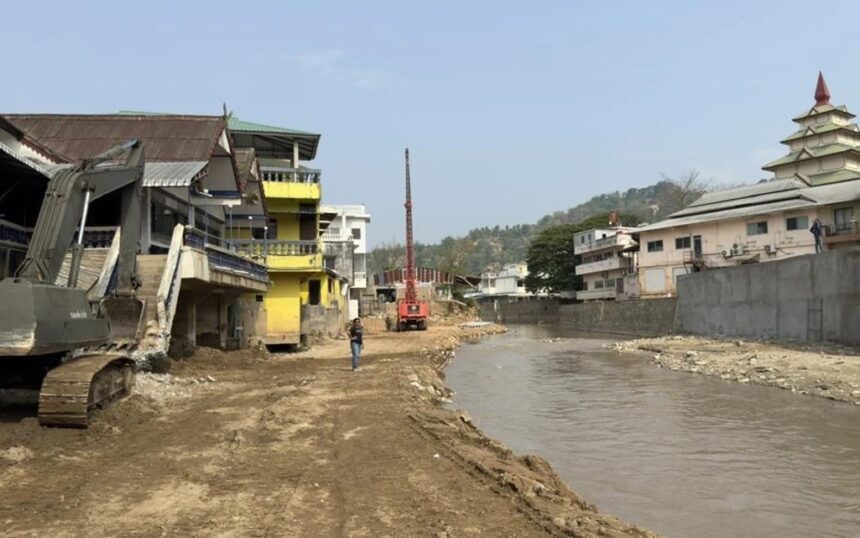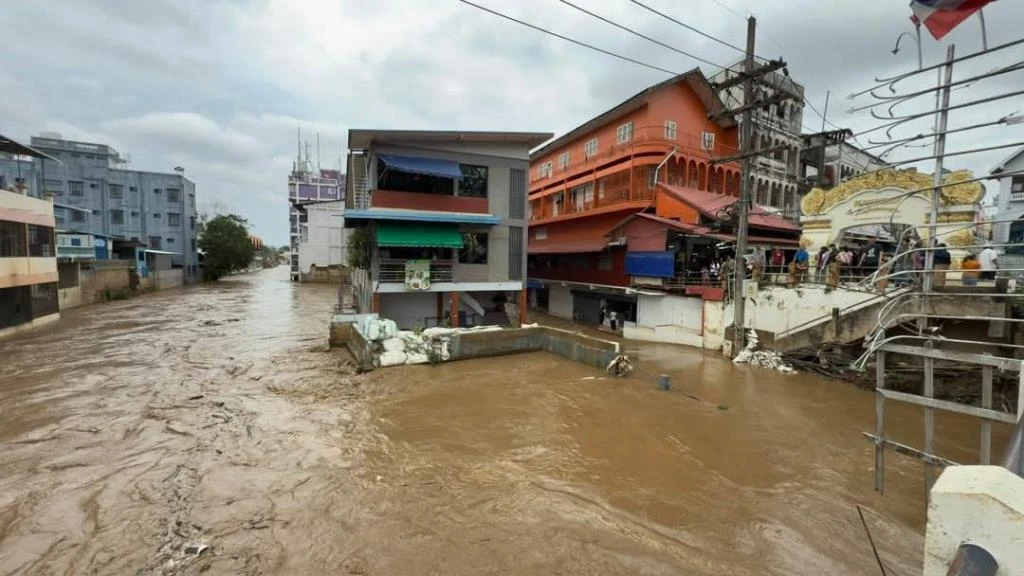CHIANG RAI—The Mae Sai River is now clearer, as a major riverside building owner has agreed to partly remove its structure. This move helps open up the river flow and is part of ongoing measures to prevent a repeat of the serious flooding seen in 2024.
Authorities are pushing ahead with the construction of flood barriers and river dredging.
On 10 May, Warayut Khombun, the district chief of Mae Sai, assigned Sithisak Injaikam and Pawaret Panyayong to join a meeting with local agencies. The discussion included representatives from the administration, the Marine Department, the land office, and forestry.
They focused on how to solve problems caused by buildings that block the Sai River, which borders Thailand and Myanmar. Flooding late last year led both countries to agree on a river dredging and barrier project, set to run from 15 April to 20 June 2025.
Until recently, some riverside building owners refused to cooperate, making it tough for the army engineers to access the site and work on the barriers. An owner in Village 7, Mae Sai subdistrict, has agreed to remove part of their building as a first step.
Earlier, officials had spoken with 11 owners of riverside buildings near the first Thai-Myanmar Friendship Bridge and sent notices to three others. Some of these buildings were on Treasury Department land, and after cancelling leases, officials moved ahead with demolition.
Construction of the Thai side river barrier is about 20% finished, slightly ahead of schedule. Army engineers have prepared the riverbank, setting concrete piles about a metre apart, driven four metres into the ground, with three metres above ground, stretching along three kilometres.
On the Myanmar side, dredging work for their 12.8-kilometre section has not started yet. However, recent talks between Chiang Rai and Tachileik officials confirmed Myanmar will complete their part on time.
Meanwhile, the Ruak River, which is under Thai responsibility, is being dredged by army engineers and the Third Army Region. They have split the work over 32 kilometres, with the Third Army handling 14 kilometres and the engineers 18 kilometres.
So far, about 9% of this work is finished, also slightly ahead of plan.
In 2024, Mae Sai suffered the most severe flooding in decades, triggered by heavy rainfall from August to September, exacerbated by Typhoon Yagi and the El Niño-to-La Niña shift, the Sai River overflowed multiple times, causing widespread devastation.
Floodwaters reached depths of 1–2 meters in some areas, with up to 2 meters of mud left behind in communities like Koh Sai, Tham Pha Chom, and Sai Lom Joy Market. By mid-September, at least 10,000 houses and shops were damaged in Mae Sai alone, with repair costs estimated at 500 million baht.
Total damages in Chiang Rai reached around 4 billion baht. The flooding was described as the worst in 80 years, impacting 200 households in Mae Sai and leaving 18,000 tons of flood-generated waste.
Related News:
Police Find Body of Woman Floating in Canal in Mae Sai, Chiang Rai















